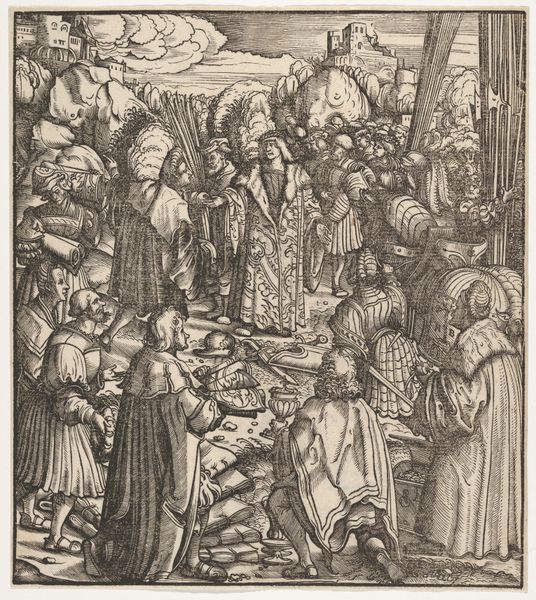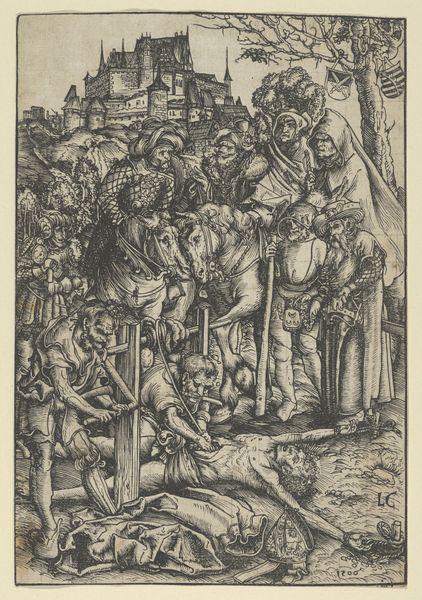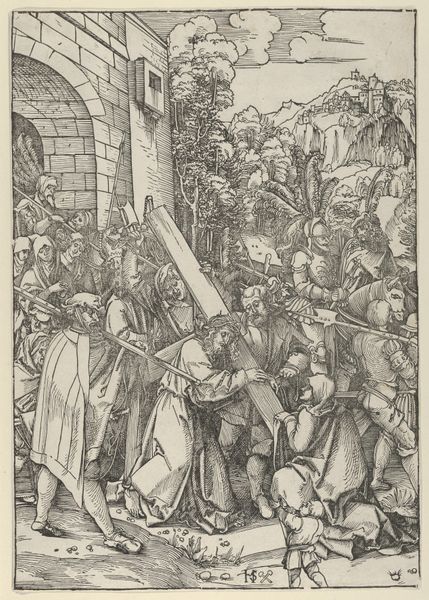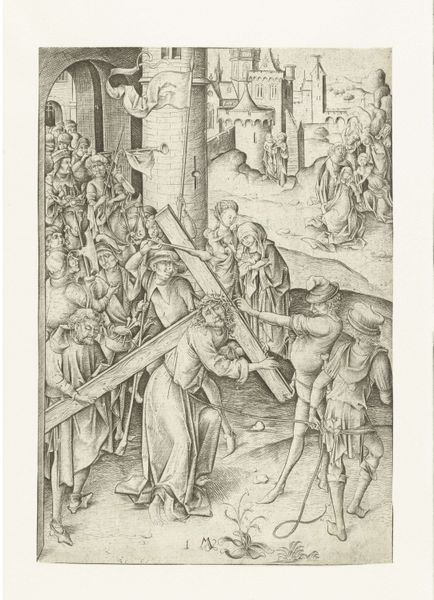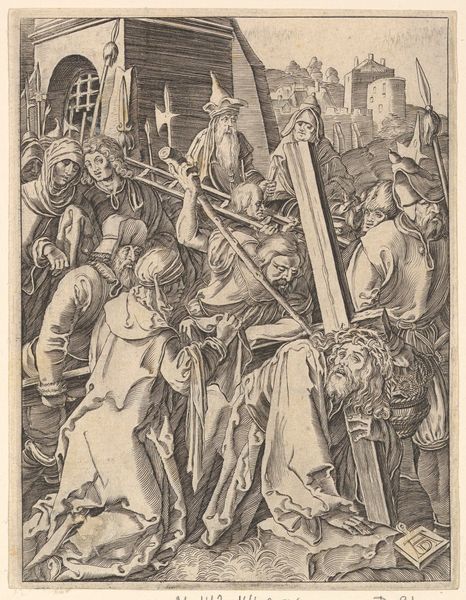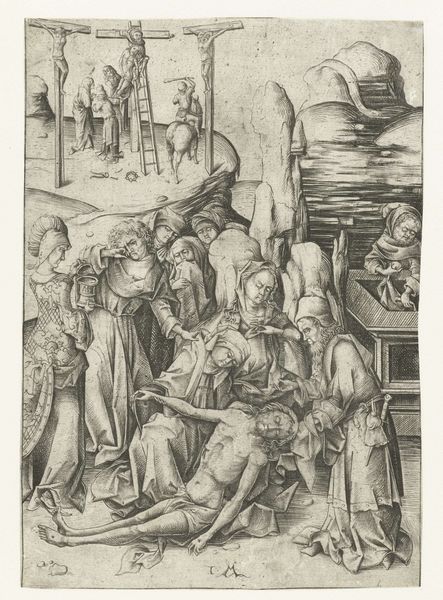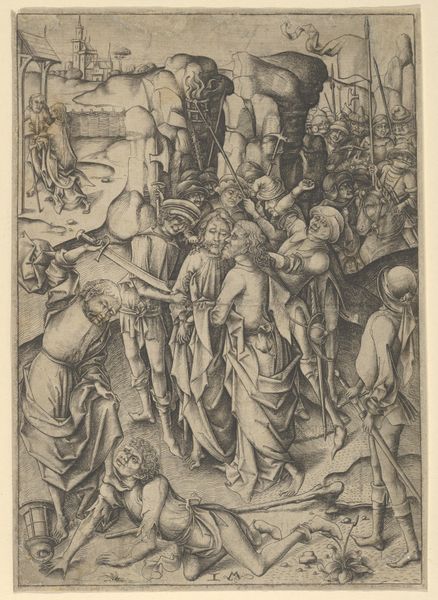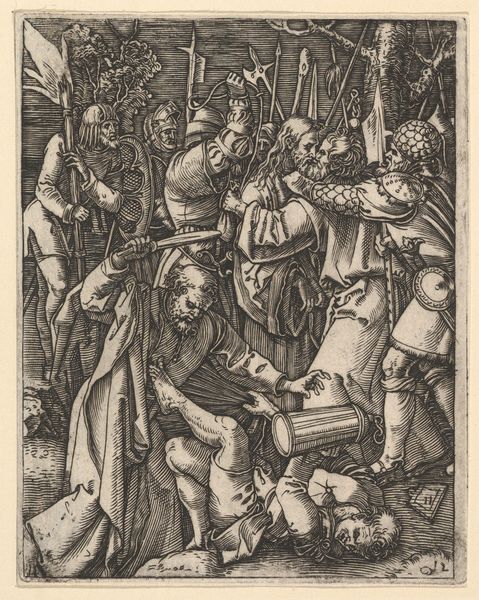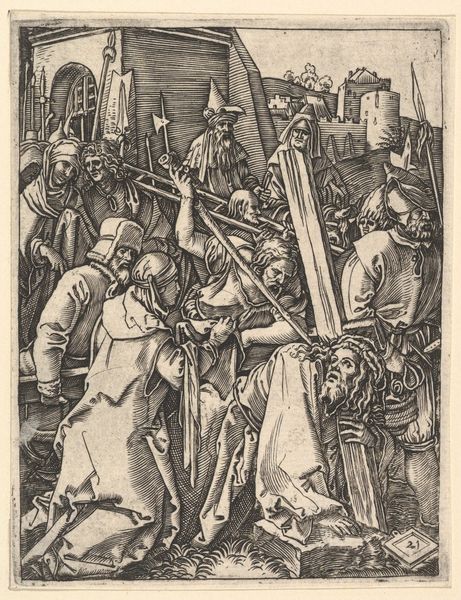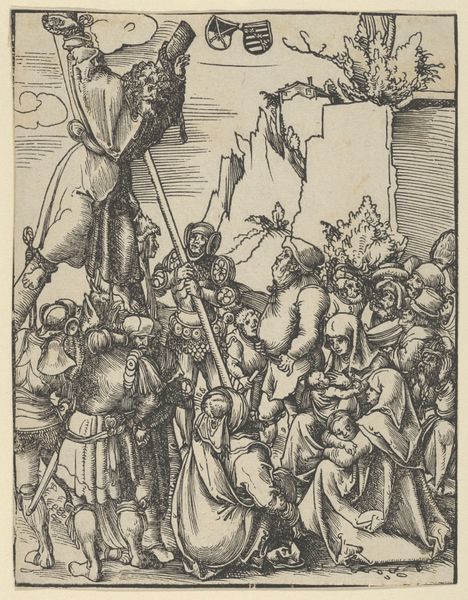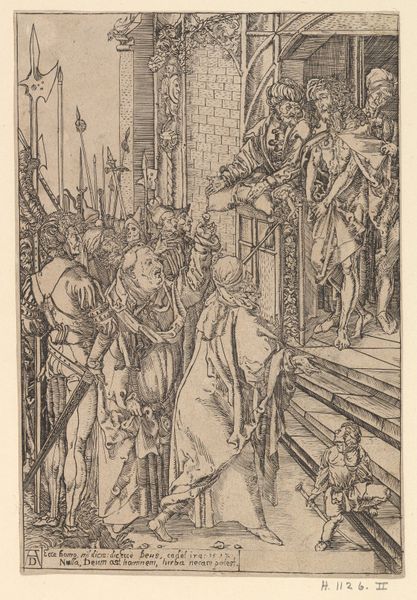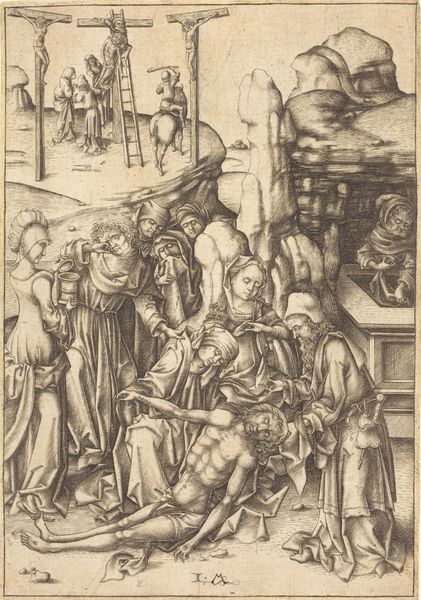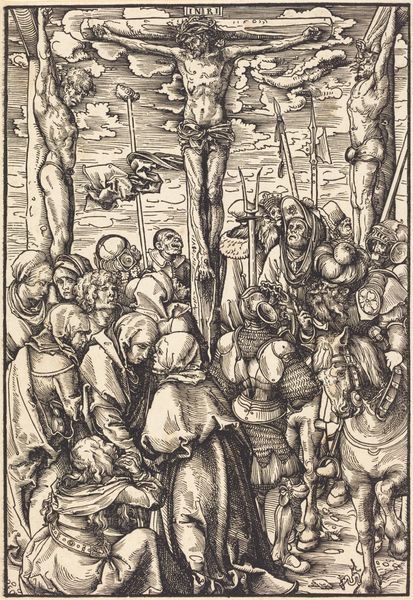
print, etching, engraving
#
medieval
#
narrative-art
# print
#
etching
#
figuration
#
line
#
history-painting
#
northern-renaissance
#
engraving
Copyright: National Gallery of Art: CC0 1.0
Editor: This etching is "The Bearing of the Cross," created around 1480 by Israhel van Meckenem. It’s packed with figures, and the stark lines create a very intense and almost claustrophobic feeling. What do you see when you look at this print? Curator: The intensity you feel comes, in part, from understanding the historical and social context of such an image at the time. Consider how this print, circulated widely, visually reinforced prevailing power structures and religious ideologies. The suffering of Christ becomes a symbol, a justification, even, for existing social hierarchies and the repression of marginalized groups. Do you notice how the artist positions the figures? Editor: Yes, Christ is at the very center, bent under the weight. The figures surrounding him seem to almost delight in his suffering. Curator: Precisely! And that active participation in Christ's suffering implicates the viewer. The composition demands that we confront our own potential complicity in systems of oppression. Who are those who wield power? And who bears the cross today? Think about gender, race, class – these systems continue to shape experiences of suffering and injustice. Where might we find visual echoes of this composition in contemporary media? Editor: That’s a powerful way to look at it. It reframes the image not just as a historical scene, but as a reflection of ongoing struggles. Curator: Exactly. And this is what I encourage all viewers to ask themselves: Whose stories are being told, whose are being silenced, and how can we, through a critical understanding of images like this one, challenge the perpetuation of inequality? What happens if you think of contemporary artists dealing with related struggles in their practices? Editor: It's really eye-opening to think about this medieval image in terms of modern social justice issues. I'll never look at religious art the same way again. Curator: Hopefully that is for the better. Understanding the intersections of historical and contemporary narratives can provide a more profound engagement with our world.
Comments
No comments
Be the first to comment and join the conversation on the ultimate creative platform.
